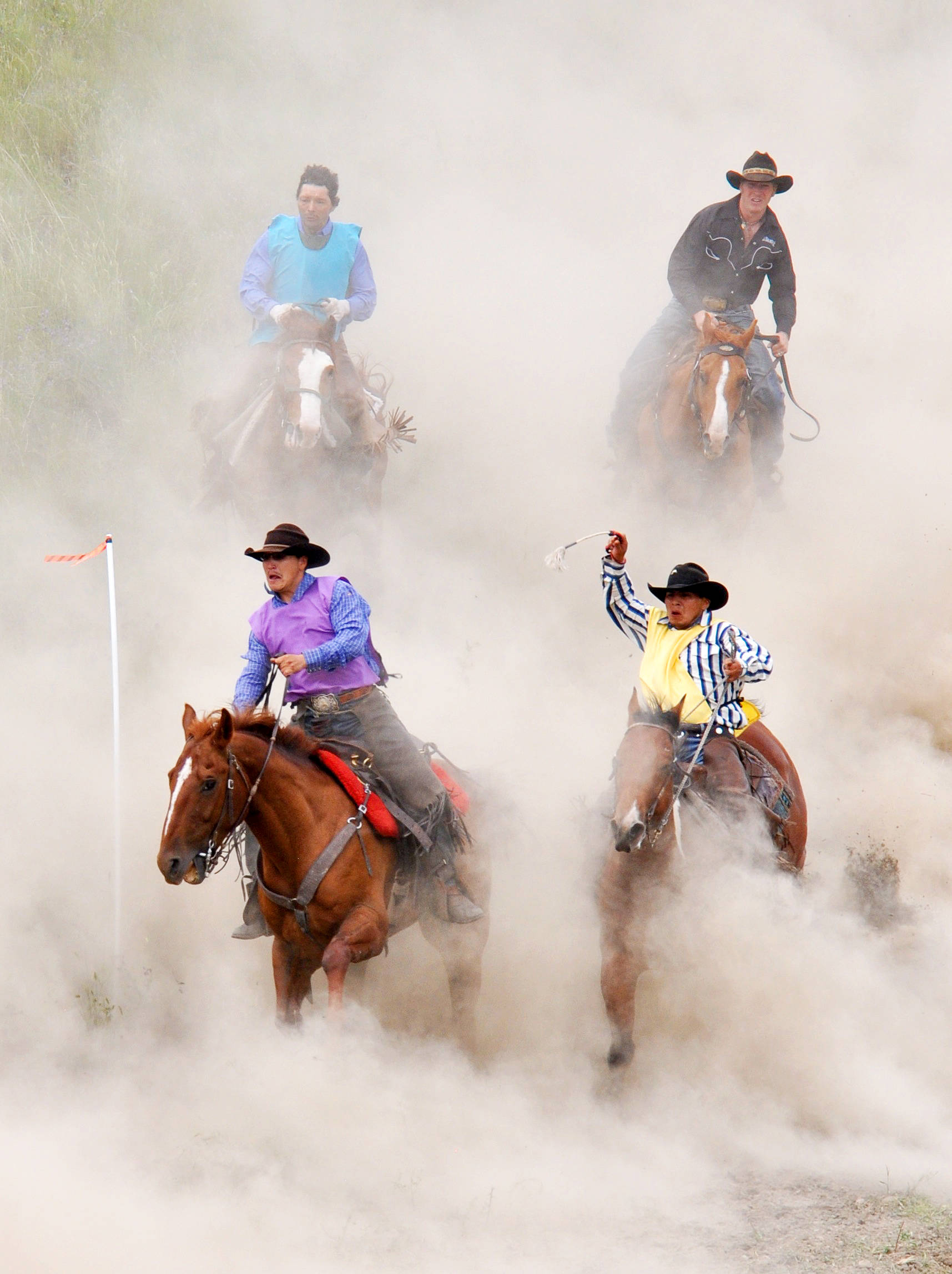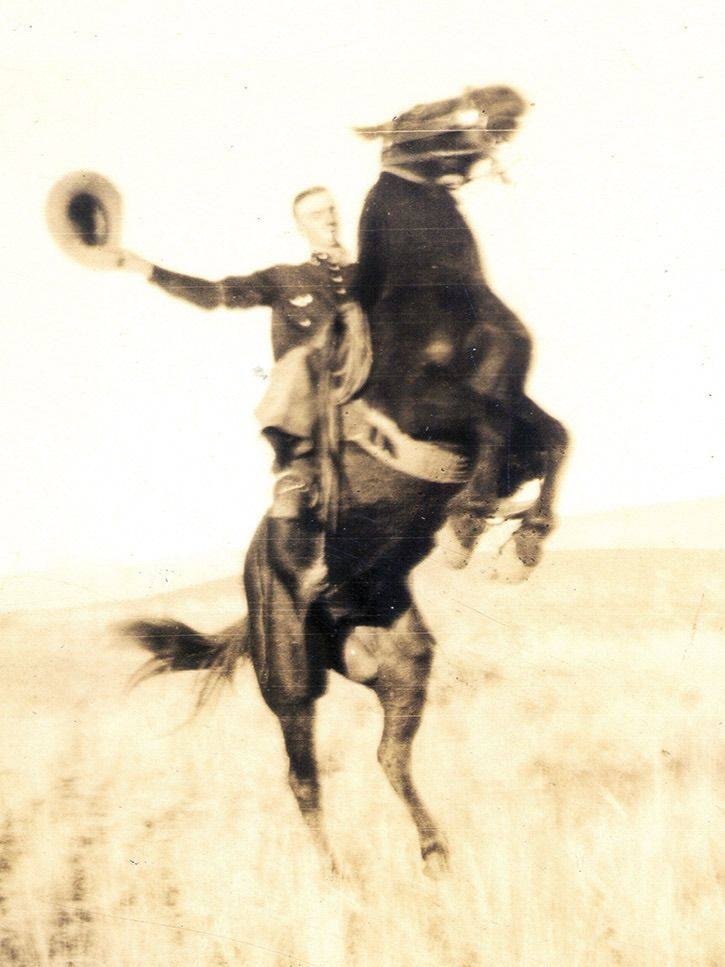Barry Sale
Special to the Tribune/Advisor
This year marks the 92nd presentation of the Williams Lake Stampede.
Some of you will no doubt be familiar with its history, but I thought it might be interesting to have a look at its very early days.
As far as I can tell, the very first Stampede was staged in July of 1919, not as a rodeo, but as a wild west-type show — part of a big get together for the locals, the ranching community and the railway construction crews. As an aside, if the first Stampede was held in 1919, and this year is 2018, then why aren’t we celebrating the 96th annual show?
The answer to that question is that during the Second World War, for seven years from 1940 through 1946, the Stampede was suspended. Many of the cowboys who would have been contestants were serving in the armed forces and the economy of the local area was focused on the war effort.
It was felt that to continue to have the Stampede during the war years would be unpatriotic.
But back to the beginning. That first wild west show in 1919 was put together by a local cowboy by the name of Jo Fleiger.
It consisted mostly of saddle bronc, bareback and steer riding, along with a wild horse race.
The whole show took about two-and-a-half hours, and it was held in the natural bowl on Borland’s ranch, right where it is still held today. The cowboys were local amateurs, and were paid a few dollars for their participation, money that was soon spent in the local saloon.
By all accounts, everyone had a great day, and the event was so much fun that a committee was formed to plan for a bigger and better one the following year.
Fleiger was an interesting character. He was born in 1901 in Chatham, N.B., and throughout his youth he dreamed of being a cowboy in the “wild west.”
He left home when he was 16, working his way out to B.C. He got a job as a construction worker on the PGE railway, and 1918 found him working in the Lone Butte area.
An opportunity came along for him to hire on as a cowboy at a nearby ranch and Fleiger jumped at the chance, even though he had no ranch hand skills or experience.
Later, he was quoted as saying: “Becoming a cowboy was like trying to join a society of magicians where everybody jealously guards their own secrets. I had to steal the trade — sneak a peek at the other guys and figure out how it was done.” He must have succeeded, because he became quite well known locally, especially for his riding skills.
By 1920, Williams Lake had started to become a boom town — the gateway to the second Cariboo Gold Rush.
A number of merchants, along with some ranchers in the area, decided to celebrate the formation of the new town and its potential as the hub of the Cariboo by building on the previous year’s show.
The committee included Herb Spencer, Antoine Boitano, Fleiger, Jimmy Smith (brand inspector) Leonard Palmantier and Harry Wright (127 Mile Ranch), among others.
A day-long “Cariboo Stampede” was planned. There was no fenced arena area, just a couple of makeshift corrals to hold the stock.
The contestants were area cowboys who were eager to show off their skills, mainly for bragging rights, since the prize money was quite paltry.
The rodeo events consisted of the “three ‘Rs’ of the Cariboo:” riding, roping and racing, and the whole day was topped off by a night of dancing in the nearby Borland House.
It was another smashing success.
In fact, it was such a success that in 1921 the committee decided to do it again, only this time it was a three-day event.
Ranchers, cowboys, First Nations people, townsfolk and an assortment of rather shady characters came from far and wide.
The town had no liquor store at the time and the saloons could barely keep up with the demand, making the celebration a great opportunity for bootleggers.
The number of prostitutes in the village was said to have tripled, as well.
The early Stampedes involved not only the cowboys — events were held for the whole community.
There were pony races, ladies’ races, boys’ calf roping and bulldogging, a three-horse relay race, a pack horse race, heavy draft team horse competitions, a chariot race featuring homemade chariots, races where a person was pulled on a cowhide behind a horse, trick riding, mock stagecoach hold ups, reenactments of attacks on a HBC fort, a Roman race, wild horse races, exhibitions of roping, fancy riding, sharpshooting and more.
The First Nations people were heavily represented, as well, both as contestants and spectators. They travelled for weeks from as far away as Nemiah Valley, the Chilcotin, Canim Lake, Cache Creek and Dog Creek, often on horseback or by horse-drawn wagon.
They camped out on the side hills overlooking the Stampede Grounds.
It was a colourful sight, especially in the evenings with all the tents set up, the campfires burning, the horses hobbled and grazing, kids and dogs running around and games of chance in progress.
By 1923, Fleiger was one of the biggest promoters of the Stampede.
That year he was the arena director (a job he held for the next four years), the announcer and, as well, he won the first mountain race.
This was probably not too surprising, since he had also laid out the course.
In ensuing years this event would prove to be one of the biggest attractions of the Stampede, and thousands of dollars were bet on the outcome. Fleiger won it in 1923, 1924 and 1926.
He also developed a trick riding act featuring him standing up in the saddle while holding a bottle of beer. He’d start his horse, Grey Eagle, down the track, whoop and holler, chug down the beer and lurch this way and that, seemingly out of control.
Then he would “accidentally” rip off the horse’s bridle, all at a full gallop past the crowd of spectators. He called it “the Drunken Ride,” and the crowd loved it.
In the winter of 1927, Grey Eagle died, and Fleiger went into a real depression. He eventually decided to leave the Cariboo. He stayed on long enough to honour his commitments, then early in 1928 he left for New York City of all places.
It seems, however, that the west was in his blood, and in April of that year, he hired on as a bronc rider with California Frank’s Wild West Show, based in Paterson, New Jersey.
Fleiger remained in the U.S. for the rest of his days chalking up a full lifetime of real adventures. He was 97 years old when he died in 1998, and like the Stampede that he helped begin, he had a colourful and eventful history.
My thanks to Irene Stangoe, Liz Twan and G.H. Huckle for much of the information in this article.

